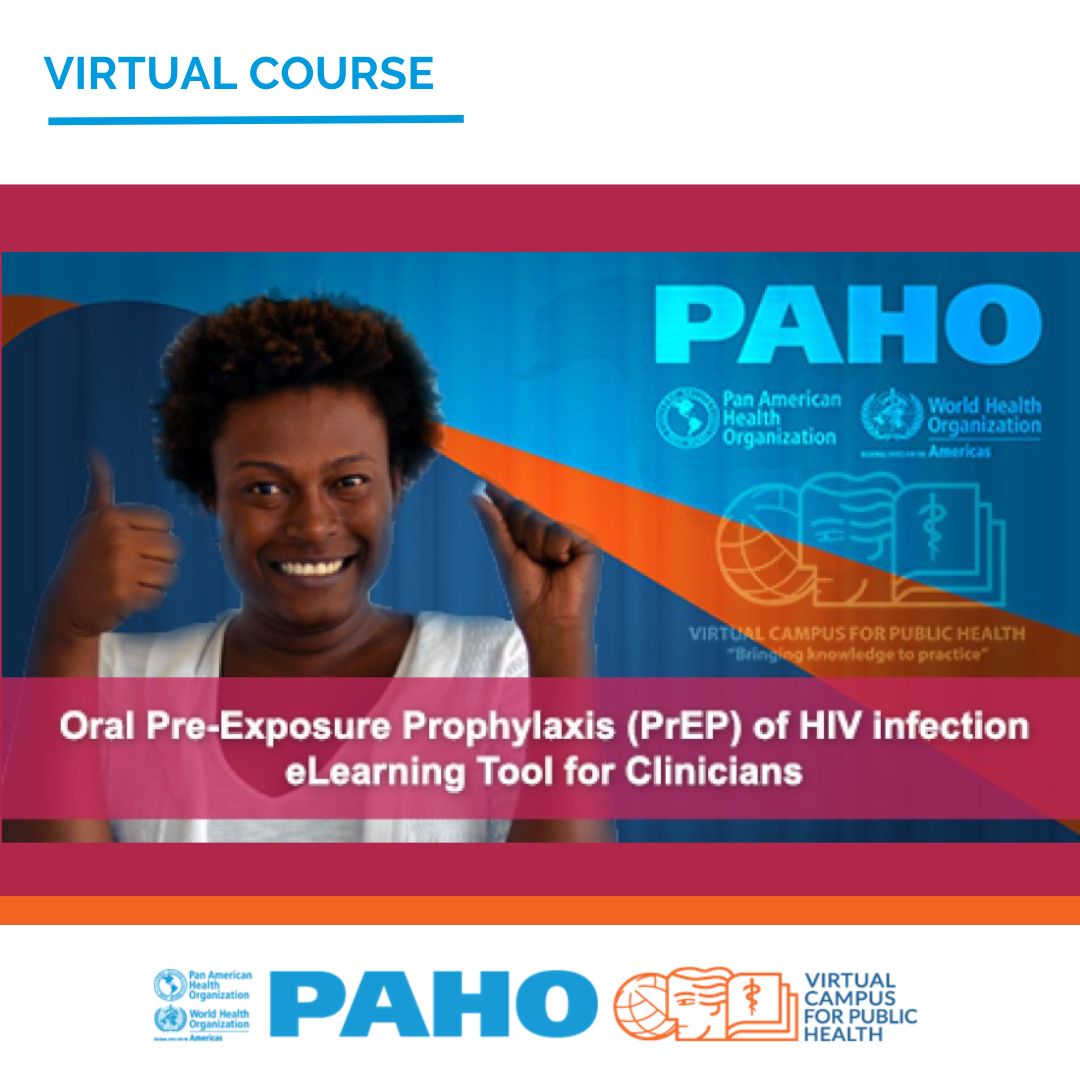
VERSIÓN ESPAÑOL ENGLISH VERSION
Course description and audience
This eLearning course is for practicing health professionals around the globe who currently have a client population at high-risk for contracting HIV and provide or will provide Oral PrEP or Post-Exposure Prophylaxis (PEP). The course has four interactive lessons and begins with identifying suitable candidates for Oral PrEP use. It then continues with initiating Oral PrEP in a client and special situations you may encounter. It concludes with key counseling strategies, including minimization of PrEP stigma.
Course objective
After completing the eLearning course, you should be able to:
- Manage Oral PrEP services in accordance with information in the WHO Implementation Tool for Oral PrEP
Estimated course length
4 hours
Course Structure
Lesson 1: Identifying Suitable Candidates for Oral PrEP Use
This lesson focuses on identifying suitable candidates for Oral PrEP use. It begins by identifying and describing seven eligibility criteria for PrEP use. Next, it discusses six indications for substantial risk of HIV infection. It continues with five contraindications for PrEP use, followed by a case study walk-through outlining the steps for calculating creatinine clearance using the Cockcroft-Gault equation and identifying results that support or contraindicate PrEP use.
Objectives
1. Describe seven (7) eligibility criteria for PrEP use
2. Identify six (6) indications that someone may be at substantial risk of HIV infection
3. Describe five (5) contraindications to PrEP use
4. Calculate creatinine clearance
5. Determine eligibility for Oral PrEP based on creatinine clearance
Lesson 2: Initiating Oral PrEP in a Client
This lesson focuses on initiating Oral PrEP in a client. It begins by introducing three oral PrEP regimens. Next, it describes the basics of PrEP usage including dispensing information and when to start and stop PrEP. It then continues with the suggested clinical procedure for initial visits as well as follow-up visits.
Objectives
6. Describe three (3) oral PrEP regimens
7. Describe the basics of PrEP usage including dispensing information and when to start and stop PrEP
8. Describe the suggested clinical procedure for initial and follow-up visits
Lesson 3: PrEP Special Situations
This lesson focuses on 7 PrEP special situations that may arise for clients using PrEP and their clinical management. It then continues with gaps in clinical knowledge about PrEP.
Objectives
9. Describe special situations that may arise for clients who want to use or are already using PrEP and their clinical management
Lesson 4: PREP Counselling and Messaging Considerations
This lesson focuses on key counselling messages for PrEP efficacy and safety. The lesson then discusses ways to reduce stigma for PrEP users.
Objectives
10. Describe key counselling messages on PrEP efficacy
11. Describe key counselling messages on PrEP safety
12. Describe how to reduce stigma for PrEP users
